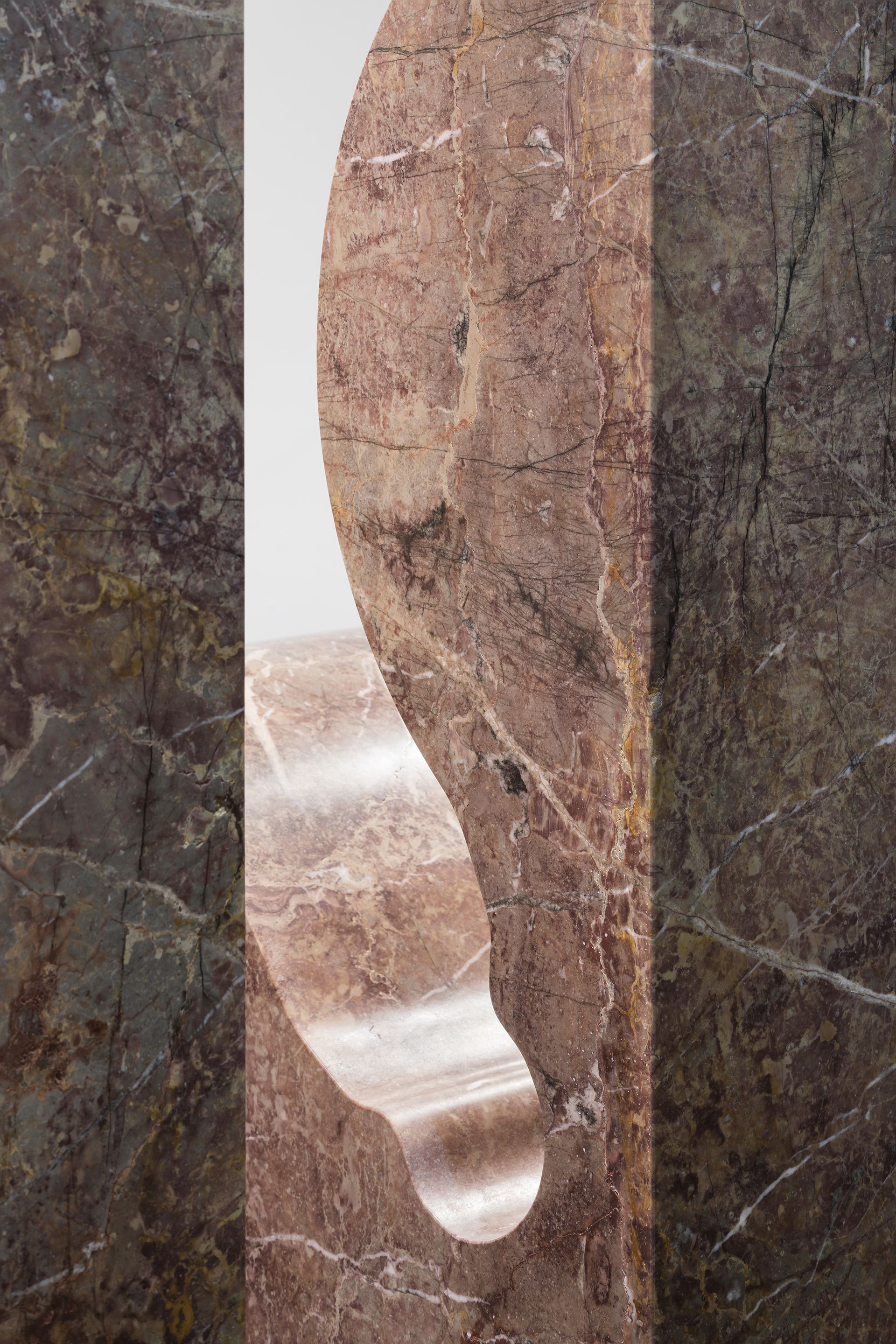
14 12
21 02
2019
Cro-Magnon Man
Jakub Berdych Karpelis
Curated by Jan Dotřel
Reinterpretation-Recyclation
In 2002 Jakub Berdych Karpelis, along with Maxim Velčovský, founded the Qubus Design Studio and, in the same year, the Qubus Design Shop focusing on the presentation of complete collections characterized by a signature style. One of the essential characteristics of Jakub’s work is searching for and finding items which have already been used several times, a process which perhaps plays a more important role than creating objects from wholly new pieces. In this way, the primary function of the given object is suppressed while, through other forms, new sign systems can be found. In the context of Czech design, Jakub’s tendency towards recyclation and reinterpretation is certainly definitive. It can be said that it has created a specific aspect of Czech contemporary design that has formed how the scene is perceived internationally. Raising seemingly absurd values to the level of a luxurious, meaningful transformation of ordinary things in an exclusive, full metamorphosis represents approaches that many designers of the younger generation follow.
Transformation-Disintegration
The criterion of art par excellence, that is its primary functionality, often, in the case of Jakub’s work, loses its stability and changes into object art whose signs are rather indicative of free art. This tendency is never followed by Jakub and the Qubus Design Studio through the help of endless repetitions of the contemporary design canons. Instead, they proceed, above all, through a nonconventional overlap and the demolition of previously experienced forms. This means that we can then see the purity of ancient kylixes, decorative visuality of the Biedermeier vases, or Czech 20th century cut glass in succession mutating on and deforming themselves.
Context
Warehouses, stone quarries, attics, factories, these were all places where potential for a new context could be found. Exhibit a form, then hack it up with a hammer. At other times the material, or object, must wait decades before being used again, or maybe even centuries for it to once again charge its new, until now, undiscovered values. Context as an artwork term is one of the most essential pillars of art creation and, in Jakub’s case, a crucial foundation.
Synthesis – Metamorphosis
Processes concerning themselves primarily with materials such as these. Glass combined with plastic, gold-plated porcelain, glass-fired wood, glass perforated with reliefs, raw and fused basalt, or marble – stone. All of this in the most distinct combinations, many of which are more than bold. Geological metamorphosis points to the change of rocks by pressure, heat, and chemical reactions while in biology geneses command development. In Jakub’s work, both of these principles synthesize together.
Interpretation of the Sign, The Sign of Interpretation
The semantic scenes which often “decorate” Jakub’s objects are a kind of window into the postmodern – they are short, simple to the point of being trivial, stereotypical, brief, and extremely striking. Love – friends – boy f rent – blow job – Matthew 22 :39 > – love your neighbour as yourself. These fragments are some kind of evidence about the meaning and omnipresence of strong keywords or signs which, in the era of social media and short messages have changed their position to a higher rank.
Stone
Cro-Magnon man is a term designating an early Paleolithic Homo sapiens. The name itself is taken from the location where the first remains were originally found in Abri de Cro-Magnon, France. This type of human was capable of production, not only of instruments and items needed for daily life such as flint, weapons, and primitive tools, but also artistic reflections such as statuettes, figures, and wall paintings. The exhibition CRO-MAGNON MAN does not represent the artist’s cross-sectional considerations nor a “best of” selection. On the contrary, the exhibition returns to Jakub’s artistic roots, not as a designer, but a sculptor with a focus on working with stone. Stone is a nonconformist material, uncompromising and heavy whose use is rather unusual among designers. It is a solid and brittle rock which melted in the early phases of our planet and whose processing requires a combination of simultaneous brutality and sensitivity. This too, is a way of characterizing the unique work of Jakub Berdych Karpelis.







